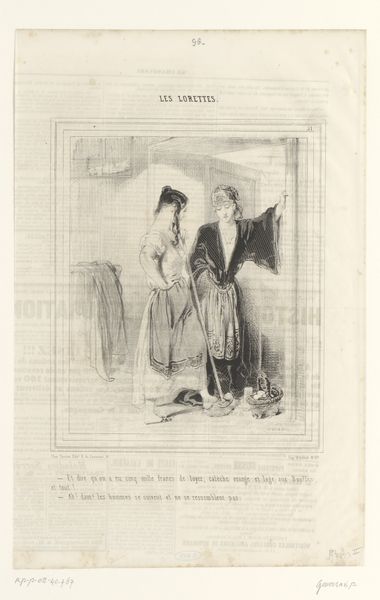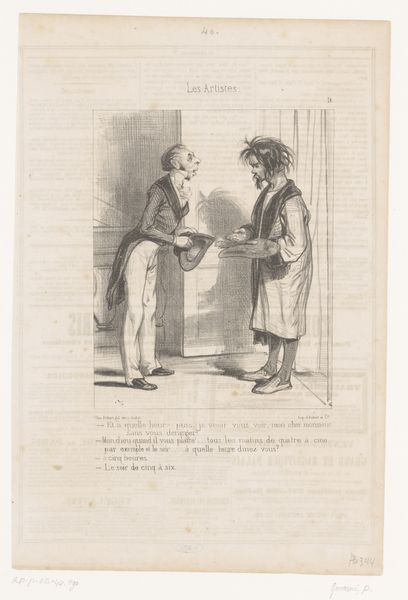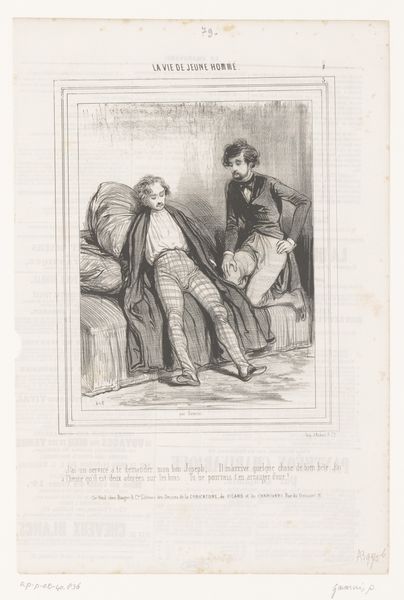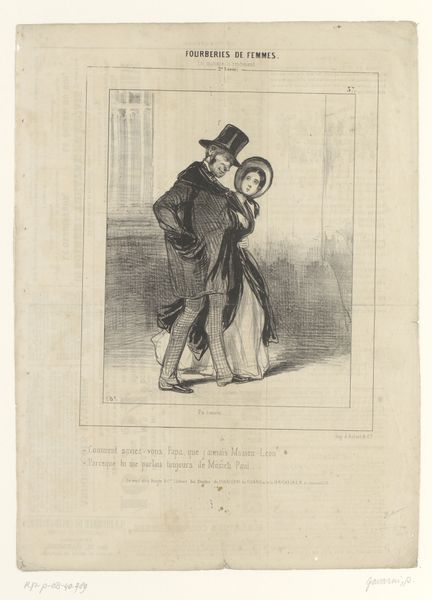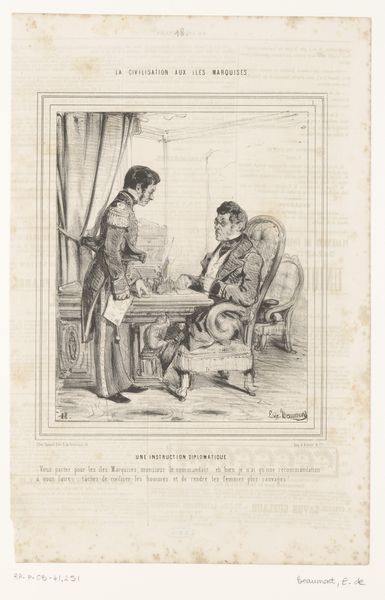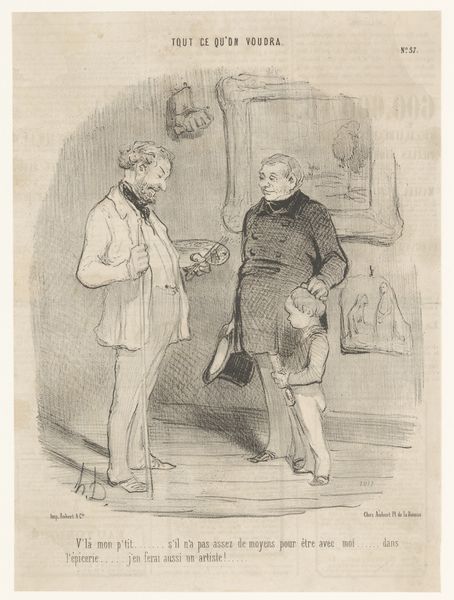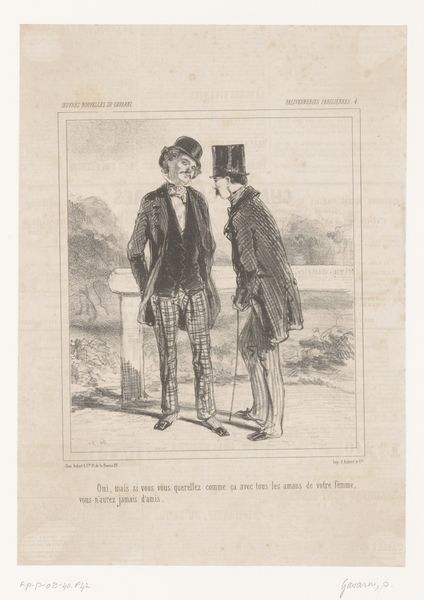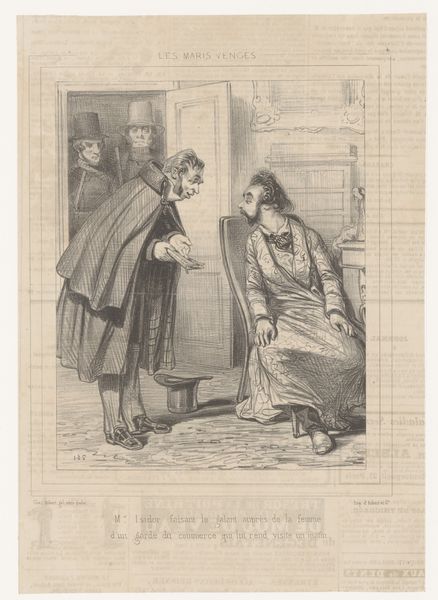
drawing, pencil, pen
#
portrait
#
drawing
#
imaginative character sketch
#
aged paper
#
light pencil work
#
pencil sketch
#
figuration
#
personal sketchbook
#
idea generation sketch
#
romanticism
#
pencil
#
sketchbook drawing
#
pen
#
pencil work
#
genre-painting
#
storyboard and sketchbook work
#
sketchbook art
Dimensions: height 363 mm, width 246 mm
Copyright: Rijks Museum: Open Domain
Curator: Looking at this drawing by Paul Gavarni from 1839, titled "Meisje met bezem krijgt opdrachten van haar vader," which translates to "Girl with broom receives instructions from her father", I'm immediately struck by the social dynamics captured in such a simple sketch. It's housed right here at the Rijksmuseum. Editor: My first impression is a bit more visceral; there’s something inherently oppressive about the image. The starkness of the pencil strokes combined with the rather severe expressions evokes a sense of constraint. It makes you wonder about gender roles in Parisian society during that period. Curator: Exactly! Gavarni was known for depicting scenes from everyday life, particularly of the Parisian working class. The broom itself becomes symbolic – an instrument of domestic labor, traditionally associated with women. She seems hesitant; he looks demanding. This is the early 19th century where those lines were rigid. Editor: And her father figure, standing with that insouciant cigarette, feels deliberately posed against a domestic space dominated by her looming broom. He's literally exhaling authority. What resonates profoundly with me are those repeated visual cues which reinforce conventional, almost theatrical displays of social rank, especially here in France at that time. Curator: Note too the setting. What appears as simple walls are not; notice the printed script. The setting here seems a transitional space; perhaps he is dictating to her near a printer or writer's place of work; her sweeping and listening becoming a metaphor for a type of mental labor—cleaning ideas? This all would subtly re-inscribe the accepted social codes of the day through implication. Editor: It also adds an unsettling dimension. Seeing those repetitive lines evokes feelings that reflect real issues such as limited educational opportunities, domestic subservience, or what have you. Art's job often isn't necessarily to deliver specific pronouncements; and here that subtlety amplifies and transcends specific circumstances. Curator: Definitely. The piece reminds us that seemingly simple sketches can encapsulate larger social narratives. Gavarni, even with limited details, speaks volumes through implication. It forces you to consider who benefits and who suffers within existing social structures, and whether art served as an implicit supporter, challenger, or merely reflector of those structures. Editor: Well, examining it together truly illuminated subtle complexities beneath that seeming simplicity.
Comments
No comments
Be the first to comment and join the conversation on the ultimate creative platform.
